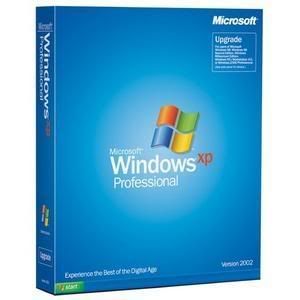WindowsXP Tips and Tricks
Friday, March 02, 2007

Uninstall Windows Messenger
It's installed by default, and it doesn't appear in the Add/Remove Program applet in Control Panel.
- Edit the SYSOC.INF file (located in C:[your Windows XP directory]INF) in Notepad.
- Under the "[Components]" heading, you'll see a whole bunch of parameters for various Windows applets. Some of them contain the word "hide". Windows Messenger (msmsgs) is installed on your XP system, but its entry is hidden from and Add/Remove Programs dialog. To remove it, edit the line that reads:msmsgs=msgrocm.dll,OcEntry,msmsgs.inf,hide,7so that it looks like this:
msmsgs=msgrocm.dll,OcEntry,msmsgs.inf,7
- Save and close the file.
- Open Add/Remove Programs.
- Click on the "Windows Components" button and you'll see "Windows Messenger" listed.
- Now you can remove it from your system.
Incidentally, you can edit everywhere the word "hide" appears in the SYSOC.INF file to reveal other removable Windows XP components: Terminal Server, Pinball, etc.
-OR-
To simply uninstall Windows Messenger without all the hassle above, enter the following on the command line or in a Run prompt:
RunDll32 advpack.dll,LaunchINFSection %windir%INFmsmsgs.inf,BLC.Remove
-OR-
Simply install Windows Service Pack 1 and the option to remove Windows Messenger will appear in the Add/Remove Programs list.
Enable DMA on ATAPI (CDROM/CDRW/DVD) Drives
Sometimes, ATAPI devices are set to PIO mode - even when the device attached is capable of much more efficient UltraATA (or DMA) mode data transfers. This can hurt the performance of CD reading, CD burning, DVD movie playback, etc. Plus, DMA mode data transfers require much less CPU overhead than PIO-mode transfers.
- Right-click "My Computer" and select "Properties".
- Click the "Hardware" tab.
- Click the "Device Manager" button.
- Expand the entry for "IDE/ATAPI controllers".
- Select the primary channel and click on "Properties".
- Then choose the "Advanced Settings" tab.
- For each device listed, change the transfer mode to "DMA if possible". Don't worry; devices that aren't capable of DMA mode will still work fine.
- Repeat the process for the secondary channel.
There are two types of IDE cables ( the cable used to connect CD and harddrives to the motherboard) currently available: 40-wire and 80-wire. 80-wire cables have thinner individual wires and are normally reserved for faster devices like harddrives, while the 40-wire cables are used for the slower CDROM/CDRW/DVD drives. However, they use the same connector, so they are interchangeable. I like to put the 80-pin cables on the CD/DVD drives as well; It can't hurt, but it may help. There really isn't much difference in price between the two. Using 40-wire cable on a harddrive will severely reduce performance for harddrives. Those extra 40 wires are actually ground wires between each of the 40 signal wires. This helps reduce the induced crosstalk between wires from data traveling at high speed.
Remove Shared Folders from "My Computer"
The shared folders are folders which have been shared from other computers on the network. It generally provides quick access to other people's shared files, but may also delay the opening of Explorer since it has to look for these directories. Or, you may simply not want them to show up. However, this does not keep you from browsing to any shared folders by navigating "My Network Places".
- Open Notepad and copy/paste the following lines:
Windows Registry Editor Version 5.00HKEY_LOCAL_MACHINESOFTWAREMicrosoftWindowsCurrentVersionExplorerMy ComputerNameSpaceDelegateFolders{59031a47-3f72-44a7-89c5-5595fe6b30ee} "(Default)"=dword:00000
- Save the file to your desktop as "removeshared.reg".
- Close Notepad.
- Double-click the "removeshared.reg" file on your desktop.
- Click "Yes" to the confirmation box.
- An alert box should tell you the information was successfully entered into the registry. Click "Ok".
- You can now delete the "removeshared.reg" file you created earlier.
- Open "My Computer" and the shared folders should be gone.
Cannot Get Windows Updates from Microsoft's website
I haven't had this happen to me, but this is supposed to work if, for some reason, you are unable to get updates for your system.
- Go into Internet Explorer and clear out the cache ("Tools" -> "Internet Options" -> press "Delete Files" and "Clear History" buttons). Then exit IE.
- Open the file C:WINDOWSsystem32driversetchosts in Notepad.
- Add the following line to the end of the file:207.46.226.17 windowsupdate.microsoft.com(Make sure there's a tab in-between the IP address and the URL or else it won't work.)
- Save the file and exit Notepad.
Install WindowsXP from DOS
You can follow these steps to install WindowsXP on your computer if the CD itself is unbootable for any reason, or your system is unable to be booted from a CD drive. You can usually make BIOS boot from the CD, it usually is just a matter of changing the boot order.
- You will need 6 Floppies. Download Microsoft's boot disk creator from here.
- Run the program and swap floppies when it tells you to.
- Once created, boot from floppy 1 of the set and follow the directions from there. You will still need the WindowsXP CD.
-OR-
- Boot with a Windows 98 Start Up floppy disk.
- Insert the Windows 98 CD into your CDROM.
- Run smartdrv.exe from the "Win98" directory on the windows98 CD. This enables file caching and is needed.
- When done, go back up to the CD's root directory.
- Take out the Windows98 CD and insert the WindowsXP CD into your CDROM drive.
- Copy the i386 folder on the CD to the C drive: xcopy D:I386 c: /c/h/e/k/r (replace "D" with the letter of your CD drive).
- Go into "C:i386" folder on the C drive and type "winnt32.exe" to launch the setup program from the hard drive.
If you do not have the windows98 CD, you can create a windows98 startup floppy from a Windows98 machine. Just make sure it also has tools on it like smartdrv.exe, xcopy, etc.
Create a shortcut to lock computer or switch user
The end result is determined by how you have your PC configured:
- If you log onto on a domain, this will simply lock the computer with the Windows2000 style logon box.
- If you log onto a workgroup or are not part of a network and have "User Switching" disabled, this will bring you to the Welcome screen to re-enter your password.
- If you have "User Switching" enabled, this will bring you to the Welcome screen for you to re-enter your password and/or allow someone else to log in too (while keeping everything you had running).
- Right click on desktop and select "New" and then select "Shortcut".
- Copy and paste the following line in the program location box:rundll32.exe user32.dll,LockWorkStation
- Click "Next" and enter a name for your shortcut and then click "Finish".
- Now you can copy and paste that shortcut anywhere you want on your computer. Good places might be your quick launch bar, Start menu, etc. You can change the icon as well.
Windows resets/locks up for no apparent reason
Check this out if Windows simply resets, "bluescreens", or locks up for no apparent reason.
- First of all, if the computer simply resets, you might want to shut off "automatic restart". This makes the computer reset if it encounters a serious problem. Shutting this off will show you a blue screen that might give you a clue as to what is going on. To shut off "automatic restart":
- Right-click "My Computer" and select "Properties"
- Click the "Advanced" tab.
- Click the "Settings" button in the "Startup and Recovery" section.
- Uncheck the "Automatically Restart" option.
Hopefully, you will be able to glean some sort of information from the blue screen when it happens again.
- Check Windows Event History. I find this to be an invaluable tool in troubleshooting.
- Click "Start", then "Control Panel", then "Adminsitrative Tools".
- Start "Event History".
- On the left are the three groups: System, Security. and Application. Select one of these and on the right will be all the entries for that group. You probably want to pay special attention to the System and Application categories as they will help you the most. Look for red circles with a white X. These are the "bad" errors. Double-click one of them to bring up a description. There might also be a website URL that may give you more information about the error. Some of these descriptions may be quite cryptic, but again, you are looking for obvious issues.
- Many times, a new or corrupted device driver may cause serious errors. If you have recently installed a new device, try reverting back an older version of the driver. If the problem goes away, you've found your problem! When installing drivers, you should always remove the old before installing the new one so there won't be any fragments of the old version littering your system.
- If you have just replaced your motherboard and now Windows gives you a blue screen error; I've got some good news and some bad news.
- Good News: Chances are there is nothing wrong with the board.... which leads me to the bad news.
- Bad news: If the motherboard chipset (nVidia, VIA, Intel, AMD, Sis, etc) on your new board is different from the old one, you probably will have to re-install windowsXP from scratch. Sometimes the differences in chipset architecture is simply too different for XP to recover from. Even if you can get it to work, you probably will have all kinds of old drivers and files from the old board, and may adversly affect performance. I've always re-installed WindowsXP using the "wipe-out-the-old-version" method to be sure of a clean install. I always make a harddrive image of my drive to another harddrive before I do this just in case I forgot a file I really need. Obviously, you should make the image before you install the new motherboard in case problems like this arise. ;)
- WindowsXP seems to be quite picky about system memory (RAM). Even though your memory ran flawlessly under Windows98/2000/ME. WindowsXP may simply refuse to accept it. I suggest downloading and running a thorough memory tester. Typically, these types of programs run by creating a bootable floppy and running in "DOS". If you have a bad stick of memory, or certain parts are bad, looks like it's time to break down and buy some new RAM.If you are running a motherboard with dual-channel capability, try re-arranging your memory to run in single-channel mode. If you don't know what "dual/single channel" is, don't worry about it.Try relaxing the timings on your memory through BIOS (CAS, RAS, etc). These settings are generally found in the "Advanced Chipset" section of your BIOS. At least lower the CAS setting to 2.5, and maybe lower your memory clock speed. If you have an OEM computer (Dell, Gateway, Compaq, etc) and cannot find these settings, don't worry, these settings are probably not available to you. They are mostly found on aftermarket motherboards like Giga-byte, Asus, MSI, Abit, etc.
- Most people neglect a very (if not the most) important part of any computer: The power supply. If you've upgraded some of your hardware, or added new (or upgraded to newer) hard/CD drives, the power supply may not be able to supply the juice your PC needs. Or, it could just be old and on its way out. Either way, it may be time to get a new one. With today's fast and power hungry video cards, CPU's, and harddrives, it wouldn't hurt to purchase a power supply with a rating of at least 400 watts or higher. You really can't have a power supply that is too big; your system will only draw what it needs. A power supply that is too small will have to work harder to provide the power to your system. This reduces its life and creates more internal heat. Plus, if a power supply "blows", it could take your expensive equipment with it. The moral: don't skimp! A cheap power supply may save you a few bucks now, but might cost you more in the long run in damaged equipment.
- One word: Temperature. Today's processors generate lots of heat. This heat is removed from the CPU via heatsink and fan. Check your fans once in a while to make sure they are clean and running smoothly. Also make sure there is no dust on the heatsink itself, which would reduce its heat dissipating properties. Go to your nearest computer store (some department stores may have a small computer accessories section) and purchase a can of "canned air", which is simply compressed air in a can. Use this to blow the dust out of these components.The best processor heatsink in the world will not do any good if the air inside your computer cannot circulate. This means you should occasionally check any case fans for dust-free and smooth operation. Some less-expensive computers use the fan built into the power supply to remove heat from the computer's case. Use the canned air mentioned above to clean these fans as well.There are programs you can download for free such as Motherboard Monitor (my favorite) that you may (depending on your motherboard model) be able to use to monitor various aspects of your computer, such as CPU temperature, power supply voltages, fan speeds, etc. This is especially important if you like to overclock your system, which is pushing the components beyond their rated specifications for the benefit of added performance. These types of people usually have aftermarket (and sometime exotic) cooling solutions though.
Other devices you should clean off regularly are video cards, harddrives, and any other surface where you see a heatsink.
Remove Windows ZIP file handling
WindowsXP will treat ZIP files like folders when selected, but this can slow down file browsing since it has to read the ZIP file to display its' contents. You can speed things up, especially on slower machines, by making XP leave zip files alone.
- Click "Start" and select "Run".
- Enter this is the command line:regsvr32 /u %windir%system32zipfldr.dll
- If you change your mind later, you can revert this by typing the following on the command line instead:regsvr32 zipfldr.dll
Volume control shortcut
Most soundcards enable you to add a volume control icon to the system tray. You can follow these instructions if this option is not available.
- Right-click on the desktop and select "New" and then select "Shortcut".
- Enter the following as the location:%windir%system32sndvol32.exe /tray
- Drag the new icon to the quick launch toolbar for best effect.
Better Game Install
I'm not really sure if this works, but if you have trouble with the regular installation, there's nothing to lose by trying this: Run the setup program from the install CD from the "Run" command box using the following format:
X:setup.exe -lgntforce
Where X is the CD drive letter, and setup.exe is the setup file used to install the game.
Create a shutdown shortcut
Use this to create a shortcut to shutdown your PC. You can also create shortcuts to log off or restart by changing a parameter.
- Right-click on the Desktop and select "New" then "Shortcut".
- Browse to the file C:WindowsSystem32Shutdown.exe.
- Click "Next", name the shortcut, and click "Finish".
- Now right-click on the new shortcut and choose "Properties".
- In the "Target" field, append the command line switch -l to log off, -s to shut down, or -r to reboot.
- If you also add the switch -t xx (where xx is a number of seconds), "Shutdown.exe" will display a warning and count down the specified number of seconds before activating. You can specify a comment to be displayed with the warning by adding the switch -c "Your text". The countdown behavior is particularly useful if the shutdown program is launched through the "Scheduled Tasks" applet. For example, a library computer might be scheduled to shut down 10 minutes before closing, with a 60-second warning. Once the countdown has begun, the only way to stop it is to launch the "Shutdown.exe" program again with the -a (for abort) switch on its command line.
Get Rid of LILO
This is used if you are dual-booting with a version of Linux. You may simply not want to use Linux anymore, but the LILO program will still display a list of Operating Systems to boot to. You can remove this so WindowsXP will boot without any prompts. Warning! Unless you have a Linux boot floppy/CDROM, you will no longer be able to boot into Linux after completing these steps.
- Boot from a Windows98 floppy disk.
- At the DOS prompt, type A:fdisk /mbr
- When done, remove the floppy and reboot.
Fix 404 Errors
You can use these tips if all of a sudden, you can no longer access a website that you should be able to. Before you do this, you should make sure the site isn't simply down by trying to navigate to the site from another computer. Also, this is only if a certain site is down; if you cannot access any sites, there is something else wrong (possibly your Internet connection).
- Check your firewall settings (if you have one).
- Check your browser security level; medium is usually adequate.
- Empty "Temporary Internet Files", "Cookies", and "History" caches.
- Check the file c:windowssystem32driversetchosts and delete any addresses aside from the line: 127.0.0.1 localhost entry. Any other lines may have been added by another program.
These tips and tricks were found on My Fav. Warez Forum W5A!!!
 If you like my post, please subscribe to my RSS feed!
If you like my post, please subscribe to my RSS feed! 










